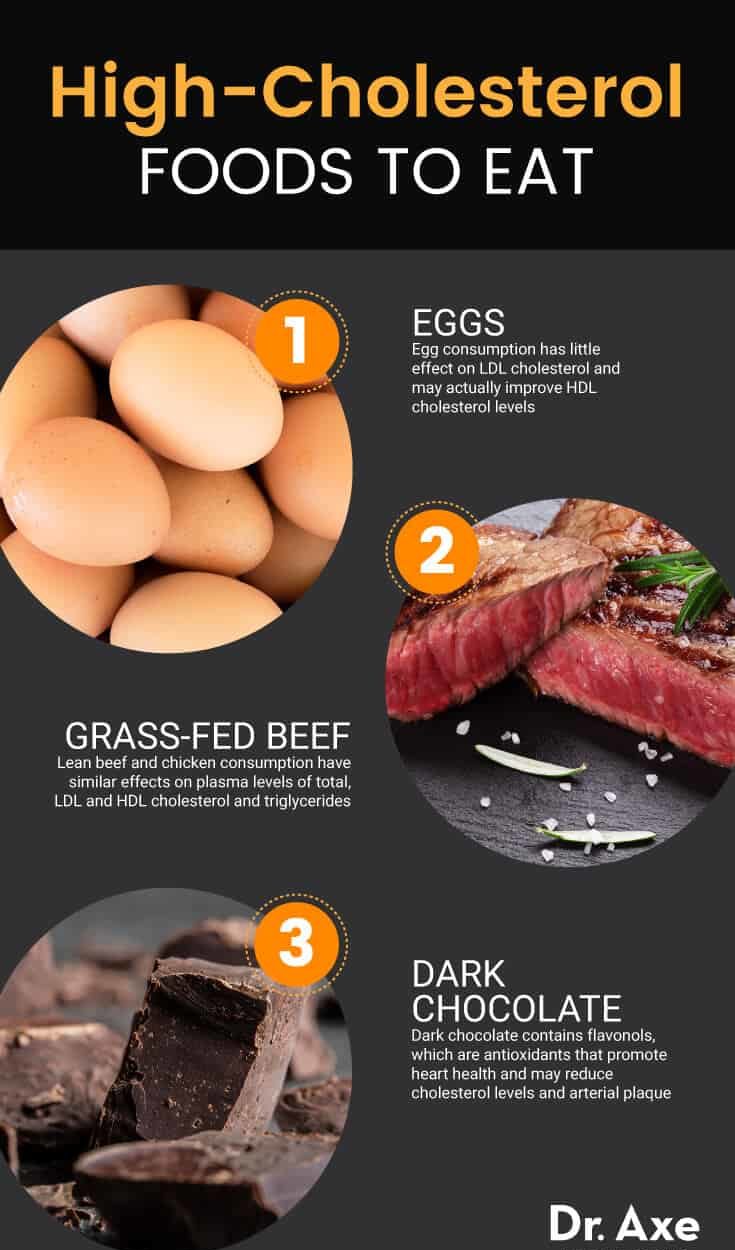This Dr. Axe content is medically reviewed or fact checked to ensure factually accurate information.
With strict editorial sourcing guidelines, we only link to academic research institutions, reputable media sites and, when research is available, medically peer-reviewed studies. Note that the numbers in parentheses (1, 2, etc.) are clickable links to these studies.
The information in our articles is NOT intended to replace a one-on-one relationship with a qualified health care professional and is not intended as medical advice.
This article is based on scientific evidence, written by experts and fact checked by our trained editorial staff. Note that the numbers in parentheses (1, 2, etc.) are clickable links to medically peer-reviewed studies.
Our team includes licensed nutritionists and dietitians, certified health education specialists, as well as certified strength and conditioning specialists, personal trainers and corrective exercise specialists. Our team aims to be not only thorough with its research, but also objective and unbiased.
The information in our articles is NOT intended to replace a one-on-one relationship with a qualified health care professional and is not intended as medical advice.
7 High Cholesterol Foods to Avoid & 3 to Eat
July 19, 2023

Cardiovascular disease is the leading cause of morality in developed and developing countries. High LDL cholesterol and triglyceride concentrations along with low HDL cholesterol concentrations are associated with elevated cardiovascular disease risk.
To ensure that you maintain heart health, it’s important that you consume cholesterol-lowering foods and avoid high-cholesterol foods that lead to inflammation and weight gain.
When it comes to lowering high cholesterol naturally, strictly avoiding all high-cholesterol foods is not necessary. In fact, foods that contain cholesterol can still be consumed regularly.
It’s all about moderation and balance — eating a combination of nutrient-dense foods that fight inflammation and tackle the root of the problem, while avoiding more harmful high-cholesterol foods like processed foods and alcohol.
What Is High Cholesterol?
Cholesterol is a waxy, fat-like substance that’s found in all cells of the body. Our bodies need cholesterol to make hormones that protect the body, vitamin D and bile salts that are necessary for the breakdown of carbohydrates, fats and proteins. Plus, the brain and nervous system depend on cholesterol for the creation of neurotransmitters like serotonin and dopamine.
Our bodies make the cholesterol that we need, but we get cholesterol from our food too. If you have too much cholesterol, it starts to build up in your arteries and may lead to atherosclerosis, or the hardening of the arteries.
Eventually, high cholesterol levels may cause heart and blood flow problems, leading to dangerous blood clots and inflammation that can cause heart attacks and strokes. High cholesterol levels alone do not determine if you are at risk of having a heart attack or stroke.
Other factors include your blood pressure, whether or not you smoke, whether or not you have diabetes, and your age, sex and race. (2a)
According to the American Heart Association, many people don’t know their cholesterols are too high because there are usually no symptoms. High cholesterol can cause a dangerous accumulation of cholesterol and other deposits on the walls of your arteries, reducing blood flow through the arteries. This can lead to coronary heart disease and complications, such as chest pain (angina), heart attack and stroke.
For several decades, there have been government-mandated dietary recommendations to limit cholesterol intake to no more than 300 milligrams per day for healthy adults. However, based on recent evidence, there are some serious challenges regarding this current dietary restriction, which has resulted in discussions of national recommendations finally being amended.
The truth is that not all high-cholesterol foods are bad for you. In fact, some can even increase HDL cholesterol levels and improve your cardiovascular health.
To distinguish high-cholesterol foods that should be avoided vs. high-cholesterol foods that can still be consumed, the most important factor is inflammation. The foods that lead to weight gain and inflammation are the ones that should be eliminated from your diet in order to promote cardiovascular health.
High-Cholesterol Foods to Avoid
Here are some of the top food sources of cholesterol among people living in the U.S.:
- Eggs and egg mixed dishes — 25 percent
- Chicken and chicken mixed dishes — 13 percent
- Beef, beef mixed dishes and burgers — 11 percent
- Full-fat cheese — 4 percent
- Sausage, hot dogs, bacon and ribs — 4 percent
- Fish and fish mixed dishes — 3 percent
- Grain-based desserts — 3 percent
- Dairy dessert — 3 percent
- Pasta and pasta dishes — 3 percent
- Pizza — 3 percent
- Mexican mixed dishes — 3 percent
- Cold cuts — 3 percent
- Reduced fat milk — 2.5 percent
- Pork and pork mixed dishes — 2 percent
- Shrimp and shrimp mixed dishes — 2 percent
Interestingly, not all of these high-cholesterol foods have a negative impact on our total cholesterol levels. The foods that cause inflammation do the most damage and increase our chances of developing heart disease.
Poor-quality animal products such as processed meats are highly inflammatory, as are toxic oils that are made using chemicals and solvents. Alcohol, sugar and caffeine are all stimulants that the liver can use to produce more cholesterol, increasing levels of inflammation.
Research shows that increased body weight is associated with high cholesterol and increased risk for coronary heart disease. Therefore, losing weight and cutting out foods that contribute to weight gain and inflammation help you lower your total cholesterol and LDL cholesterol levels. The following foods should be avoided to decrease LDL and increase HDL cholesterol levels:
1. Processed Vegetable Oils
When vegetable oils undergo hydrogenation, which it often does to become a partially hydrogenated oil, this increases its level of trans fats. These are a group of fats that you want to avoid as much as possible since they’re scientifically known to increase LDL cholesterol and lower HDL cholesterol levels.
Research shows that all fatty acids with one or more bonds in the trans configuration raises the ratio of LDL-to-HDL cholesterol. Other oils that contain trans fatty acids include corn oil, safflower oil, soy oil and vegetable oil.
2. Potato Chips and Other Packaged Foods
Extensive research evaluates the rise in snacking, snack foods and ultra-processed foods in the American diet. Some studies show that 66 percent of calories consumed by U.S. citizens comes from packaged foods and beverages.
Because snacking and snack foods have grown in frequency and number, eating frequency has also increased, leading to higher rates of obesity and high cholesterol levels. Avoid unhealthy snacks, such as potato chips, crackers, fried foods and other packaged foods.
3. Cookies and Other Sugary Treats
Dietary sugars serve as the cause of obesity, several chronic diseases and a range of cardiometabolic risk factors. Today in the U.S., over 75 percent of packaged and processed foods contain some form of added sugar. Research shows that added sugars have been associated with increased LDL cholesterol, raised triglycerides and decreased HDL cholesterol.
This includes baked goods, such as cookies, cakes, muffins, pastries, candies and other packaged foods that contain added sugars. Also, sweetened beverages lead to weight gain and inflammation, which can negatively impact your cholesterol levels. This includes soda, juices, energy drinks and other sugary drinks on the market today — all of which lead to sugar addiction.
4. Bacon and Other Processed Meats
Recent studies have shown that processed meats are associated with increased cardiovascular disease and stroke mortality. Evidence suggests that processed meat consumption increases the risk of heart health issues, while unprocessed meat consumption has a small or no association with cardiovascular disease.
Limit consumption of processed meats, such as bacon, sausage, bologna, salami and hot dogs. Even those with “reduced fat” labels are high in calories and saturated fats. Plus, processed meats are often high in sodium.

5. Alcohol
Too much alcohol raises your blood pressure and triglyceride levels, while moderate alcohol consumption (up to five grams per day) may decrease the risk of cardiovascular disease. Research shows that higher levels of consumption increase the risk of developing heart issues, beginning at 30 grams per day for women and 45 grams per day for men.
6. Milk and Other Conventional Dairy Products
Milk fat contains a broad range of fatty acids, and some have a negative impact on cholesterol-rich lipoproteins. The saturated fatty acids, such as lauric acid and myristic acid, increase total plasma cholesterol, especially LDL. Research shows that replacement of dairy saturated fatty acids and trans fatty acids with polyunsaturated fats decreases LDL cholesterol levels and is associated with a reduced risk of cardiovascular disease.
Recent randomized control trials show that fermentation of dairy can be used to produce products with more beneficial effects on plasma lipid profile, such as kefir and organic, cultured yogurt. In fact, a study showed that unpasteurized yogurt decreased serum cholesterol by 5–9 percent.
7. Refined Grain Products
A diet high in refined carbohydrates, like white bread, tortillas, bagels and pasta, has a negative effect on your HDL cholesterol level. Studies show that refined grains have a high glycemic index, and consumption of these kind of carbohydrates lead to significantly higher risks of high cholesterol.
Reducing your intake of these types of carbohydrates can improve your HDL levels. Opt for high-quality, sprouted breads and fruits instead.
Healthy High-Cholesterol Foods to Eat
1. Eggs
Although the majority of dietary cholesterol in the U.S. diet comes from eggs and egg mixed dishes, research shows that egg consumption has little effect on LDL cholesterol and may actually improve HDL cholesterol levels.
In a study published in the Journal of Nutrition, 28 overweight or obese male participants aged 40–70 years were instructed to reduce calorie intake by consuming a low-carbohydrate diet, and they were randomly assigned to supplement this diet with three eggs per day (640 milligrams of cholesterol) or a cholesterol-free egg substitute, which was provided to them for 12 weeks.
The intervention resulted in significant reductions in body weight. LDL and triglyceride concentrations were similar between the two intervention groups, but HDL cholesterol concentrations were higher in the egg-supplemented group. It turns out that there are plenty of health benefits of eggs.
2. Grass-Fed Beef
The recommendation to lower saturated fat intake is often interpreted as requiring the elimination of beef to control or lower cholesterol levels.
However, research shows that lean beef and chicken consumption had similar effects on plasma levels of total, LDL and HDL cholesterol and triglycerides, suggesting that lean, grass-fed beef and chicken are interchangeable.
3. Dark Chocolate
Dark chocolate contains flavonols, which are antioxidants that promote heart health and may reduce cholesterol levels and arterial plaque.
A study published in Free Radical Biology and Medicine found that the polyphenols present in dark, healthy chocolate may contribute to the reduction of lipid peroxidation. In the study, 45 healthy volunteers consumed 75 grams daily of either white chocolate, dark chocolate or dark chocolate enriched with cocoa polyphenols.
Researchers found that there was an increase in serum HDL cholesterol in the dark chocolate and dark chocolate with cocoa polyphenols groups, and LDL levels decreased in all three study groups.

Good vs. Bad Cholesterol
Cholesterol travels through your bloodstream in small packages called lipoproteins, which are made up of fat on the inside and proteins on the outside. Because fats aren’t water-soluble, this binding with proteins helps move them through the bloodstream.
It’s important to have healthy levels of two lipoproteins that carry cholesterol throughout the body: low-density lipoproteins (LDL) and high-density lipoproteins (HDL). Both LDLs and HDLs transport cholesterol in and out of cells and are involved in damage control of cells and tissues.
LDLs carry 75 percent of the cholesterol in our bodies and are the cholesterol compounds most involved in cell damage and tissue repair and protection. HDLs do only 25 percent of the work; they transport cholesterol to and from the liver and serve as the body’s cholesterol-recycling system.
LDL is called “bad” cholesterol because when your levels of LDL are high, this can lead to a buildup of cholesterol in your arteries. When you have high levels of LDL cholesterol in your blood, you have a greater chance of developing heart disease. LDL cholesterol also raises your risk for a condition called peripheral artery disease, which can develop when plaque buildup narrows an artery supplying blood to the legs.
LDL cholesterol has this reputation as a bad form of cholesterol because some LDLs are very small and can pass through the artery wall, becoming oxidized by free radicals. LDLs can also be oxidized or damaged by a diet of processed, refined and fried foods. It’s oxidized cholesterol that’s linked to the formation of plaque in the arteries.
Conversely, HDL cholesterol is known as “good” cholesterol because it can carry cholesterol from other parts of your body back to your liver, where it’s properly broken down and removed from your body.
When you have higher levels of HDL cholesterol, your chances of developing heart disease are lower. It’s helpful to raise HDL levels because low HDL cholesterol can be more dangerous than high LDL cholesterol.
Because cholesterol doesn’t dissolve into the blood, HDL cholesterol is needed to get rid of the excess cholesterol in your body that may be oxidized and lead to inflammation, thereby putting you at risk of coronary heart disease and other health conditions.
Precautions
Avoiding these high-cholesterol foods alone will not necessarily decrease your risk of developing cardiovascular disease. It’s also important to increase your physical activity, lose weight and quit smoking if you’re a cigarette smoker. Regardless, you should have a regular physical with your healthcare provider so that your cholesterol levels are checked.
There are also factors that you can’t control, such as an inherited condition called familial hypercholesterolemia, which causes very high LDL cholesterol levels.
Final Thoughts
- Cholesterol is a waxy, fat-like substance that’s found in all cells of the body. Our bodies need cholesterol to thrive, but when we eat high-cholesterol foods, the levels can become too high.
- Over time, high cholesterol levels may cause heart and blood flow problems, leading to dangerous blood clots and inflammation that can cause heart attacks and strokes.
- It’s important to have healthy levels of two lipoproteins that carry cholesterol throughout the body: low-density lipoproteins (LDL) and high-density lipoproteins (HDL).
- Not all high-cholesterol foods have a negative impact on our total cholesterol levels. The foods that cause inflammation do the most damage and increase our chances of developing heart disease. This includes packaged foods, sugary treats, processed meats, conventional dairy, excessive alcohol and refined carbohydrates.



